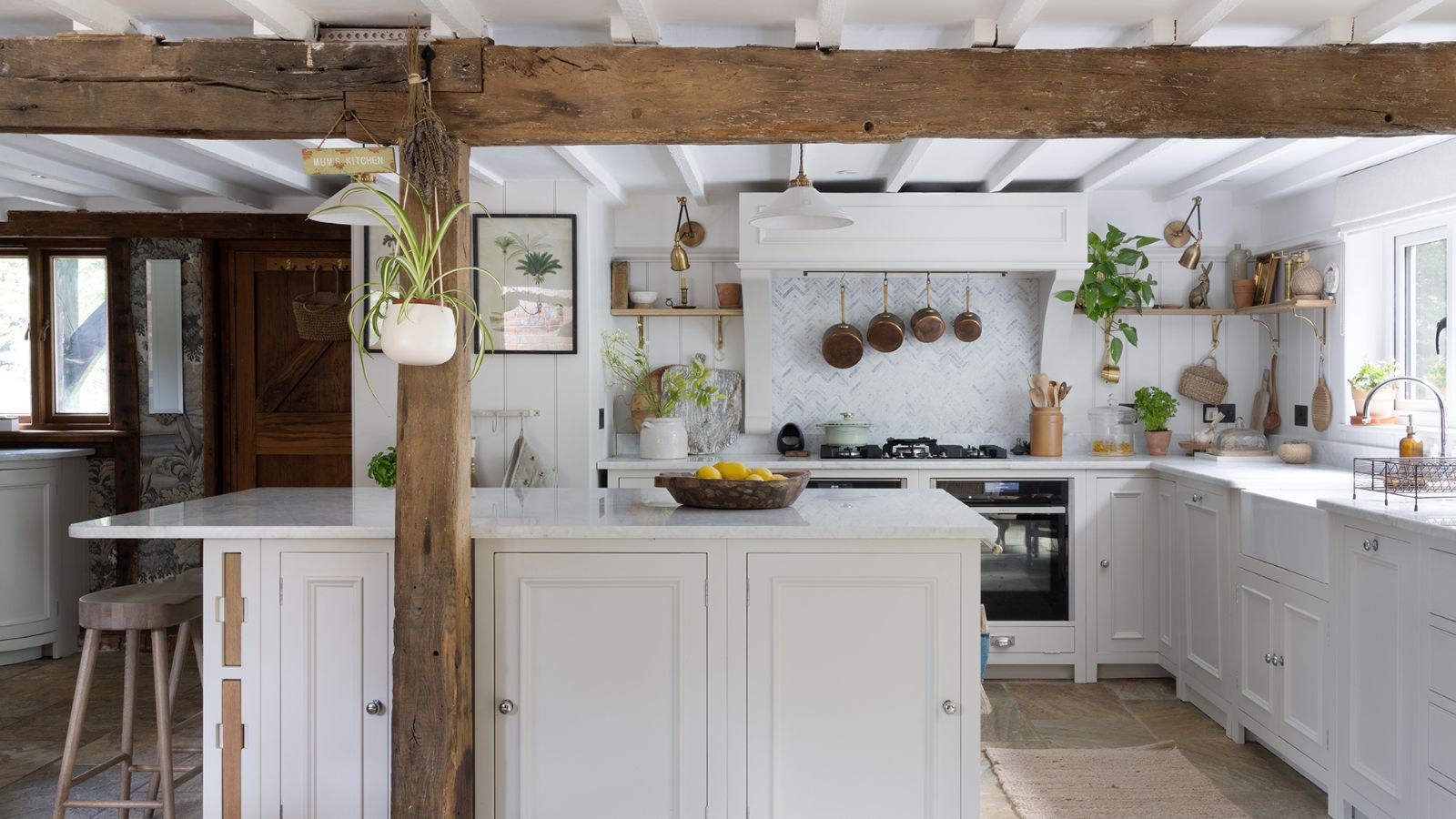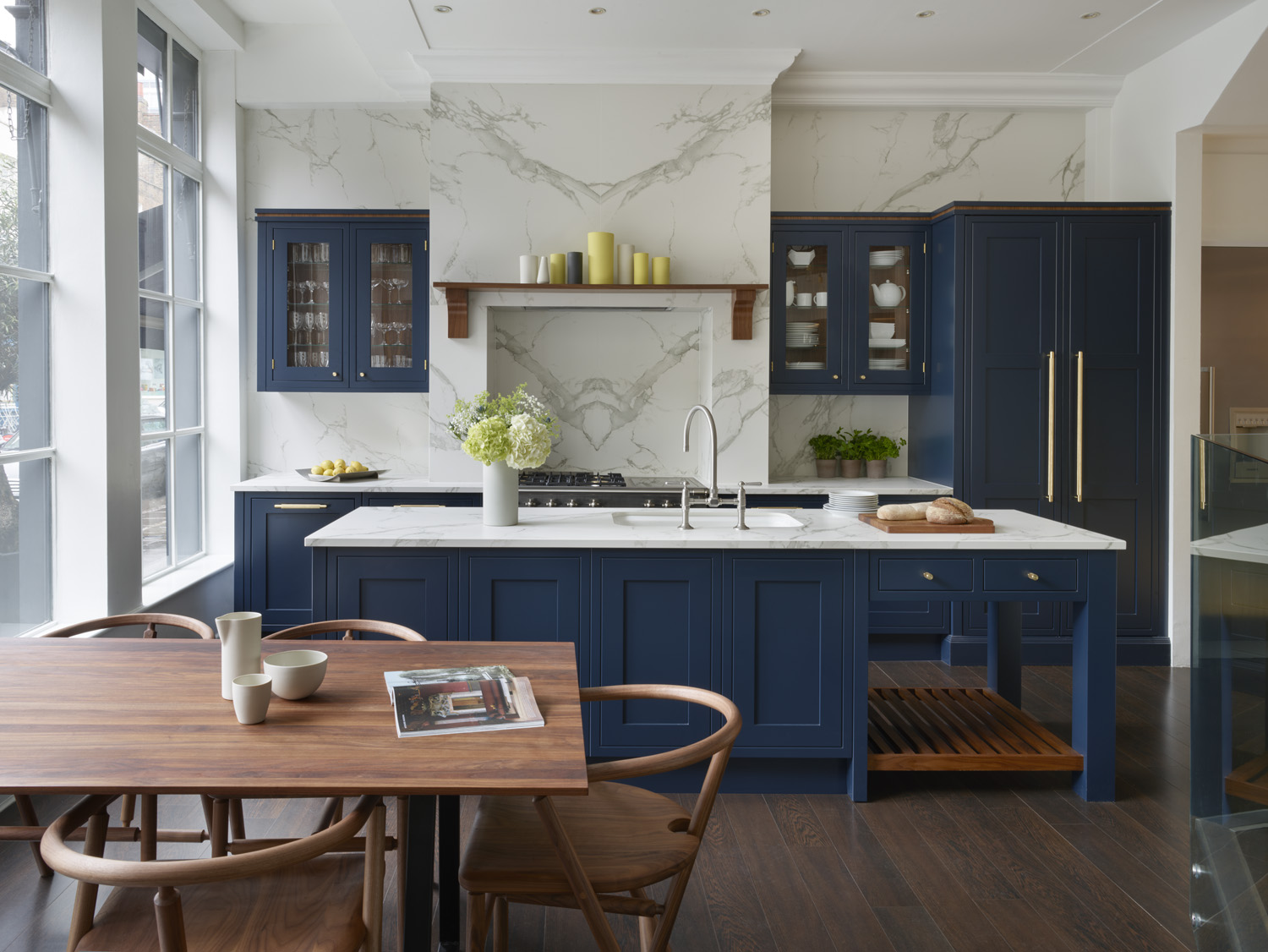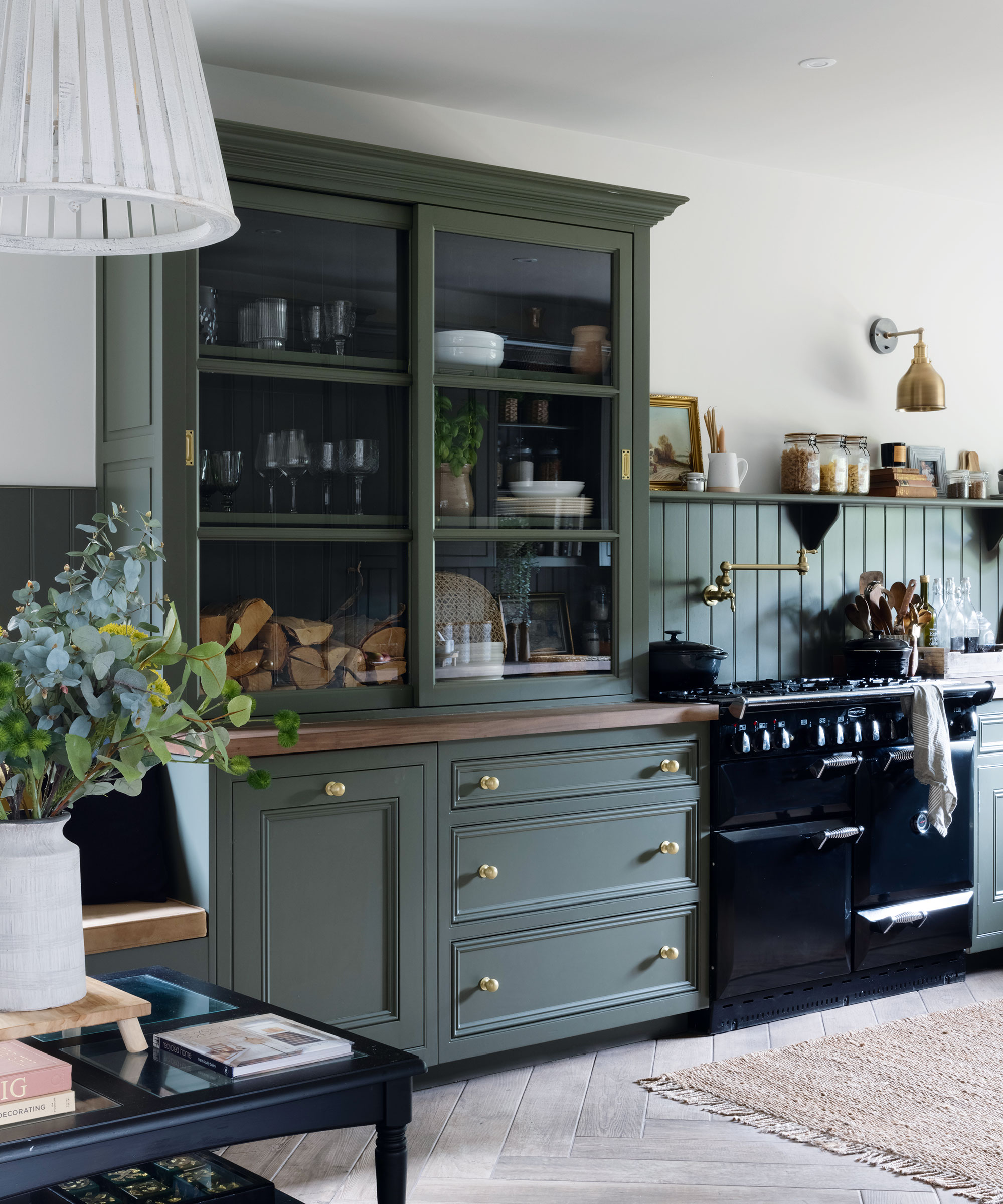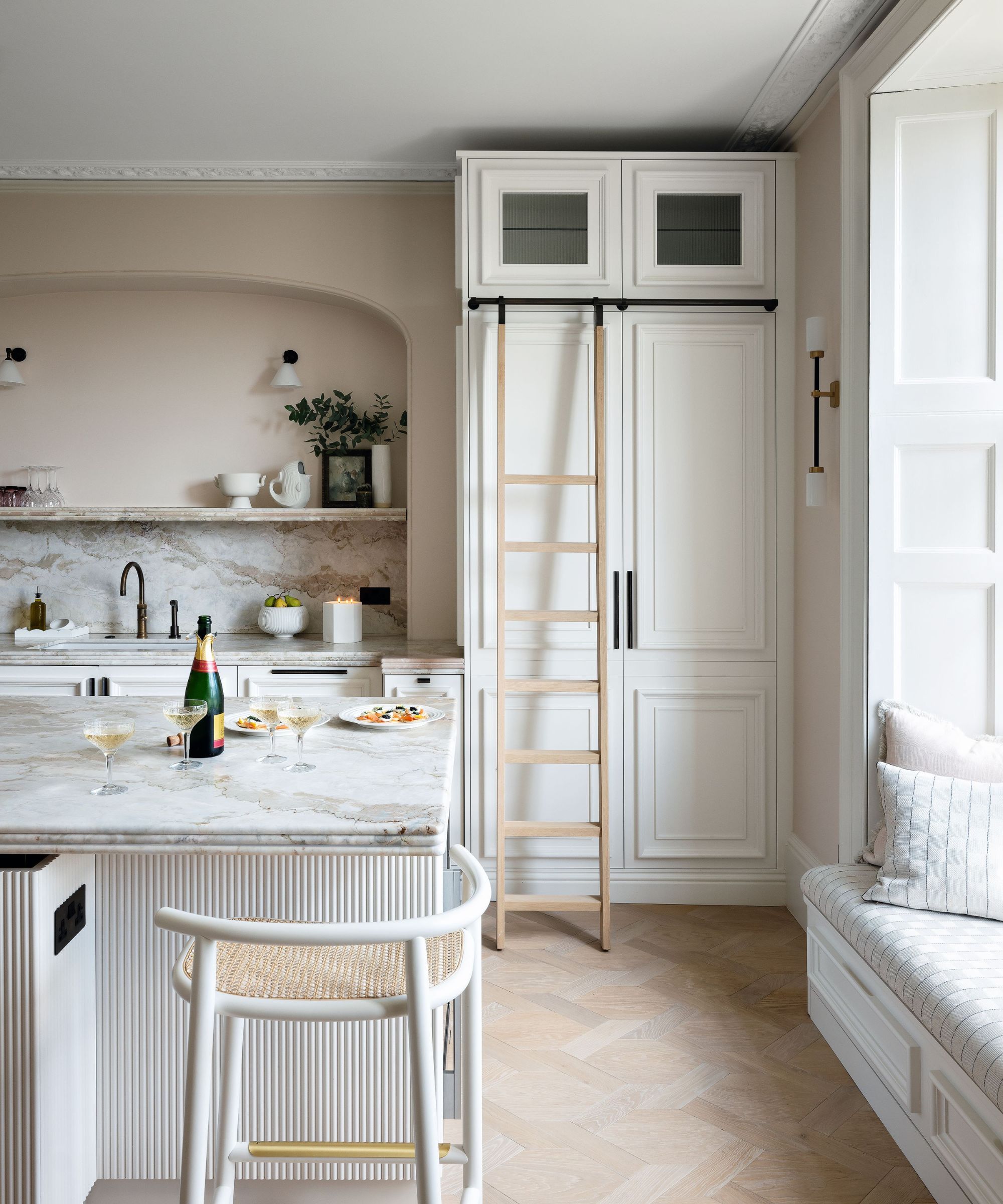Should you buy a used kitchen? Experts weigh up the pros and cons
Purchasing a preloved kitchen for your home renovation could save you some serious money, but it's not without its potential pitfalls


Planning the kitchen of your dreams can be both exciting and daunting, with countless decisions to make and a budget to manage. But one option that might not be on your radar yet is buying a used kitchen.
A used kitchen – also known as a ‘second-hand’ or ‘preloved’ kitchen – typically includes pre-owned units, appliances, and fixtures that have been lightly used or featured in showrooms as ex-displays. These kitchens often look nearly new and can offer significant savings for your kitchen remodel.
But how do you know if a used kitchen is the right choice for your home? There are several benefits to consider – and a few red flags to swerve. But with a bit of planning and some savvy shopping, buying a used kitchen could be a smart and economical choice.
The Pros of Buying A Used Kitchen

Opting for a used kitchen not only has the potential to help you cut the cost of a kitchen remodel, but it can also add a touch of sustainability to your home renovation project by giving quality materials a second lease on life. Here are several reasons to consider opting for a used kitchen in your home:
Price
One of the biggest draws of opting for a used kitchen is the chance to save a significant amount of money on your remodel.
'The average used kitchen sells from anything from $2,000 to $32,000+ depending on whether it's a nearly new designer kitchen or an older DIY brand,' explains Looeeze Grossman, Founder of The Used Kitchen Company. 'Typically, you can expect to save 50-70% off the RRP of an ex-display kitchen, saving thousands even if you end up adding to it.'
Moreover, buying a used designer kitchen allows you to achieve a high-end look at a significantly reduced price. 'This option often includes high-end appliances and stone countertops which would often cost thousands more if bought separately,' Looeeze continues. 'Many of our kitchens include top-of-the-range appliances such as steam ovens, wine coolers, and range cookers. Often, it’s these extras and luxurious worktops which offer the greatest value.'
Design expertise in your inbox – from inspiring decorating ideas and beautiful celebrity homes to practical gardening advice and shopping round-ups.
Customization
Beyond the savings, used kitchens offer a fantastic opportunity to get creative and customize your space.
'We have buyers who have purchased high-end brands like deVOL, Neptune and Tom Howley and spent a similar amount to a DIY high street brand,' says Helen Lord, Founder of Rehome.co.uk. 'The joy of this is further enhanced when coupled with the fact that they also have the pleasure of getting creative and designing it specifically for their home. And don’t forget, nobody would guess this was secondhand unless the homeowner told them!'
'You could also incorporate used items in a custom kitchen to create statement pieces,' adds Bryce Crowley, Owner and Design Consultant at Kitchen Solvers of La Crosse. 'Decorative island backs or range hood facades made from salvaged materials can be a great way to give a kitchen your own personalized twist.'
Unique Finds
Another advantage of choosing a used kitchen is the potential for unique finds and design elements. Since these kitchens come from various sources – like showroom displays or previous renovations – you might discover rare, high-end pieces or vintage elements that aren't available in current retail collections. This can add a distinctive touch to your home, making your kitchen stand out with a blend of styles and features that reflect your personal taste.
No Lead Times
A major perk of opting for a used kitchen is the lack of lead times. Unlike new kitchens, which often require weeks or even months of waiting for delivery and installation, second-hand kitchens are typically available for immediate purchase and pickup. This means you can jumpstart your renovation project without delay, bringing your dream kitchen to life much faster.
Environmental Impact
'As well as the financial savings, there are much desired environmental savings versus buying new,' explains Helen Lord from Rehome. 'On average it costs 4,000kgs of carbon and 1.5 trees, to make a new kitchen, making buying pre-owned a more mindful choice.'
The average kitchen also creates 1-2 tonnes of waste, so the more you can salvage during your kitchen remodel, the better. 'In the UK, the waste from renovations and demolitions accounts for 62% of household waste each year,' explains Looeeze Grossman. 'By buying and selling used and ex-display kitchens, you can contribute to the circular economy.'
The Cons of buying a used kitchen

While there are plenty of benefits to buying a second-hand kitchen, it’s important to consider the potential drawbacks as well.
Outdated Trends
While there's a lot to be said for opting for a transitional kitchen design, let's be honest – kitchen trends can change rapidly. This means that a used kitchen can end up looking tired or dated if it reflects a distinct style that is no longer fashionable.
Depending on the aesthetic you're trying to achieve in your home, this can add to a kitchen's vintage charm, or it might just mean that your kitchen doesn't align with your vision. So, when browsing used kitchens, consider whether or not your chosen style is a passing trend.
Wear and Tear
Even though many used kitchens are in great condition, they may still show signs of wear and tear. Scratches, dents, or minor damages are common and may require extra work if you want to restore them to their former glory.
'One of the only downsides to buying an older kitchen is that appliances may not last as long as those bought new,' explains Looeeze Grossman from The Used Kitchen Company. 'However, these appliances are often included free of charge, potentially giving you 5-10 years of use at no extra cost.'
Fit and Compatibility Issues
It goes without saying that a bespoke kitchen designed for your space is going to be easier to install than one salvaged from another home or showroom. But just how complicated is this process?
'Dismantling a pre-installed kitchen is complex and requires expertise,' explains Helen Lord from Rehome. 'While many builders have installed kitchens, few have experience in removing them. Taking shortcuts during this process can lead to unnecessary damage to the kitchen you have purchased and may leave you disappointed or out of pocket.'
Bryce Crowley from Kitchen Solvers agrees: 'There are some challenges that have to be faced when reusing cabinets. Modular cabinets usually come in 3” width increments. Every space is different and being able to come up with a thoughtful layout using preexisting constraints is not always easy. Meeting with a professional designer and going through what cabinet boxes you have available and what layout you desire will determine if reusing cabinets is a good fit for your project.'
'One of the most important steps is to measure your kitchen space accurately before making the purchase,' adds Looeeze Grossman from The Used Kitchen Company. 'Check heights, including plinths and cornices, and double-check you have accounted for the depth of corner units and worktops. I would strongly recommend discussing your chosen kitchen with the person who will install it, to ensure it fits your space properly and functions as intended.'
How to measure for a used kitchen

Measuring for a new kitchen is relatively straightforward, especially if you're keeping the current layout. Start by measuring your current space, noting the sizes of each cabinet (width-wise) and this will give you a cabinet shopping list to work from.
If you are planning a redesign, this requires a little more planning. Check the space you have, including the location of doors, windows, and utilities, as well as the height of your ceilings. Once you've got an idea of your desired kitchen layout, match the available units to these layout measurements. There are many places online to find practical help to do this, however, graph paper and post-it notes cut to scale for your desired list of cabinetry works just as well.
What to look for when buying a used kitchen
Before you commit to buying a used kitchen, it's important to check the cabinets, worktops and appliances for potential 'red flags'. Helen Lord from Rehome explains:
- Water and heat are the main things that will cause damage to a kitchen. When viewing, check the sink area for water damage and doors near heat sources like cookers, dishwashers, and kettles. These will give you a quick view of the condition of the kitchen overall.
- Check for wear inside the cabinets, while they can be replaced, they cannot be repaired, which may incur additional costs.
- For MDF doors, which are likely painted, look for swelling, bubbling, or ‘furry’ patches. These are caused by water ingress and cannot be repaired.
- Vinyl doors tend to be unstable and can peel due to heat changes and water exposure. If you see any shrinking at the edges or the finish has become unattached, it's best to avoid these as they are a cheaper style of kitchen and may not be suitable for reuse.
- Don't expect to reuse laminate countertops, as they are almost impossible to remove and reinstall, however, stone worktops can be re-templated to fit a new layout.
- If you are changing the original layout, consider that end panels, kickboards, and decorative trims may need replacing if they have screw holes or cutouts.
- Kitchen cabinets that are a minimum of 18mm thick (not flat-packed) are much better for reuse. Cheaper cabinets may be only 15mm thick, making them less suitable with a shorter lifespan.
- Painted and wood kitchens offer more flexibility when buying second-hand, as they can be easily repainted and have their handles replaced to create a fresh look. Laminate kitchens can also be painted or vinyl-wrapped. However, lacquered finish kitchens lack this level of adaptability, so carefully consider the longevity of your color choice.
FAQs
Where can I buy used kitchens online?
One popular source of used kitchens is kitchen showrooms. When new models are introduced, the current display kitchens need to be cleared out, and that's where you can score a high-end kitchen setup at a fraction of its original price.
Online marketplaces like Craigslist, Facebook, and eBay are also treasure troves for second-hand kitchen deals. Another great source is renovation leftovers – when homeowners remodel their kitchens, the perfectly good units and appliances they’re replacing often need a new home.
What happens if the kitchen you choose is too big or too small for your layout?
'We always advise a buyer to aim to buy a kitchen which is either perfect for their kitchen layout or slightly larger as this gives more configuration options,' says Helen Lord from Rehome. 'Leftover cabinets can either be used to construct a kitchen island, utility, or bar area or used in a different room in the house. Plus you could even sell anything that is not required.'
A kitchen that is too small for your needs means you need to get creative. 'Consider adding co-ordinating furniture like a feature vintage dresser, wine rack or similar, or if your kitchen is painted,' continues Helen. 'Or ask a joiner to make a new cabinet matching the door profile. Once painted and new door furniture is fitted only an expert will be able to tell this isn’t original.'
How can you protect yourself when buying a used kitchen?
Ex-display kitchens often do come with warranties from the manufacturer, however, for pre-owned this is not normally the case.
'In reality, product warranties are mostly valuable when it comes to appliances as cabinet warranties have many disclaimers you will need to navigate,' explains Helen Lord. 'As a rule of thumb the more expensive the brand was originally, the longer its life span.'
'To protect yourself further, if buying from an online Marketplace where the homeowner is responsible for the kitchen’s measurements and condition notes, request to view before purchasing,' Helen continues. 'If you cannot view, request numerous photos showing every angle and detailed close-ups and consider the red flags mentioned above or ask for a video call.'
If going green is your main motivation for purchasing a used kitchen, borrow these eco-friendly kitchen remodel tips to design the sustainable kitchen of your dreams.

Thomas Litten is a freelance food and drink writer whose articles and product reviews have been featured in a variety of national publications. His introduction to food and drink came through the hospitality sector, running bars for Michelin-starred restaurants. This experience, plus a love of good food, wine, and spirits, led to a career selling premium drinks to high-end restaurants and later providing consultancy services to food and drink start-ups across the UK. Now, based in southwest England, he mainly divides his time between working for a leading bakery business, visiting coffee shops, and collecting and writing about kitchen gadgets.